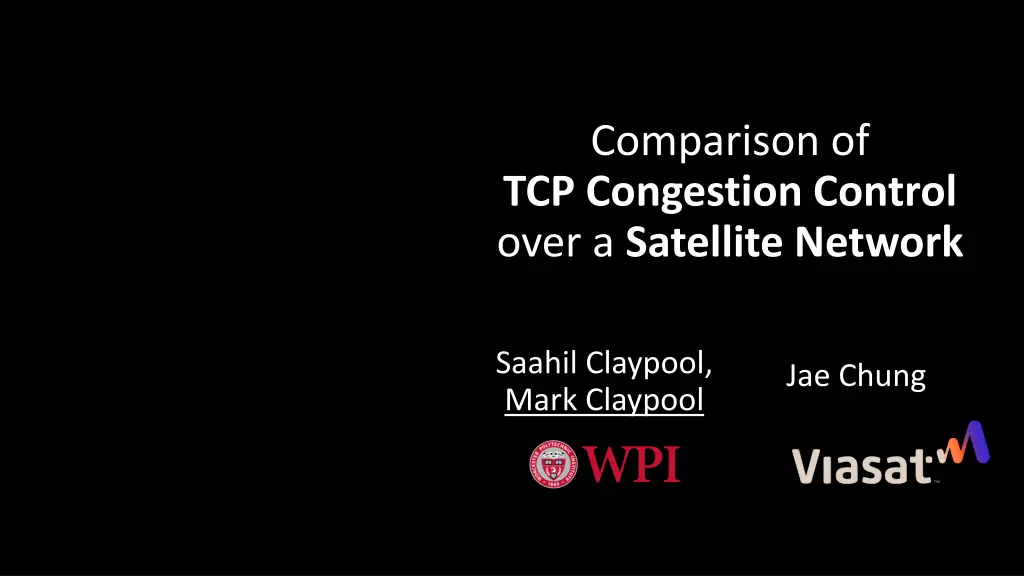
TCP Congestion Control Comparison Over Satellite Networks
Explore a study comparing TCP congestion control algorithms over satellite networks, highlighting challenges such as latency and the impact on throughput. The research covers methodologies, baseline results, steady state analysis, and implications for optimizing TCP performance in satellite communications.
Download Presentation

Please find below an Image/Link to download the presentation.
The content on the website is provided AS IS for your information and personal use only. It may not be sold, licensed, or shared on other websites without obtaining consent from the author. If you encounter any issues during the download, it is possible that the publisher has removed the file from their server.
You are allowed to download the files provided on this website for personal or commercial use, subject to the condition that they are used lawfully. All files are the property of their respective owners.
The content on the website is provided AS IS for your information and personal use only. It may not be sold, licensed, or shared on other websites without obtaining consent from the author.
E N D
Presentation Transcript
Comparison of TCP Congestion Control over a Satellite Network Saahil Claypool, Mark Claypool Jae Chung
Introduction (1 of 2) Introduction (1 of 2) Satellites provide global networking Always on connectivity for remote locations, during disasters Bitrates increasing (20x recently) Challenge is latency about 300 ms min. one-way for geosynchronous 300 ms
Introduction (2 of 2) Introduction (2 of 2) Latency impacts TCP bitrates One window of packets each RTT Window size depends upon congestion control algorithm TCP Cubic loss-based TCP BBR BDP-based TCP PCC utility function-based TCP Hybla satellite optimized Few published studies of TCP over satellite network Mostly simulation or emulation This paper TCP over satellite netwrk
Outline Outline Introduction Methodology Results Conclusions (done) (next)
Methodology Methodology Client 144 Mb/s Servers Baseline UDP Ping Bulk-download iperf [RFC 5166] Throughput Round-trip time Retransmissions (loss)
Outline Outline Introduction Methodology Results Baseline Steady State Start-up Conclusions (done) (done) (next)
Baseline Baseline Loss: 0.05% 77% are single packet Largest 11 packets (2.2 seconds)
Steady State Steady State Throughput Throughput median BBR Cubic Hybla PCC
Steady State Steady State Throughput Throughput RTT (ms) Tput (Mb/s) 780 821 958 685 BBR Cubic Hybla PCC BBR Large Hybla PCC
Start Start- -up up
Start Start- -up up Tput (ms) RTT (ms) 917 757 799 806 BBR Cubic Hybla PCC Very Large BBR Hybla PCC
Power Power ? =???? ??? BBR Cubic Hybla PCC
Conclusion Conclusion 1. Baseline consistent RTT 600ms, low loss 2. Steady state: Medians similar Mean BBR, PCC lowest 3. Start-up: Hybla fastest BBR, PCC next Cubic slowest 4. Power: PCC steady state Hybla start-up
Future Work Future Work Multiple Flows e.g., BBR and Cubic together TCP settings and Protocols e.g., RTT0, QUIC Performance Enhancing Proxy (PEP) Other applications e.g., Web browsing, streaming video
Comparison of TCP Congestion Control over a Satellite Network Saahil Claypool, Mark Claypool Jae Chung






















